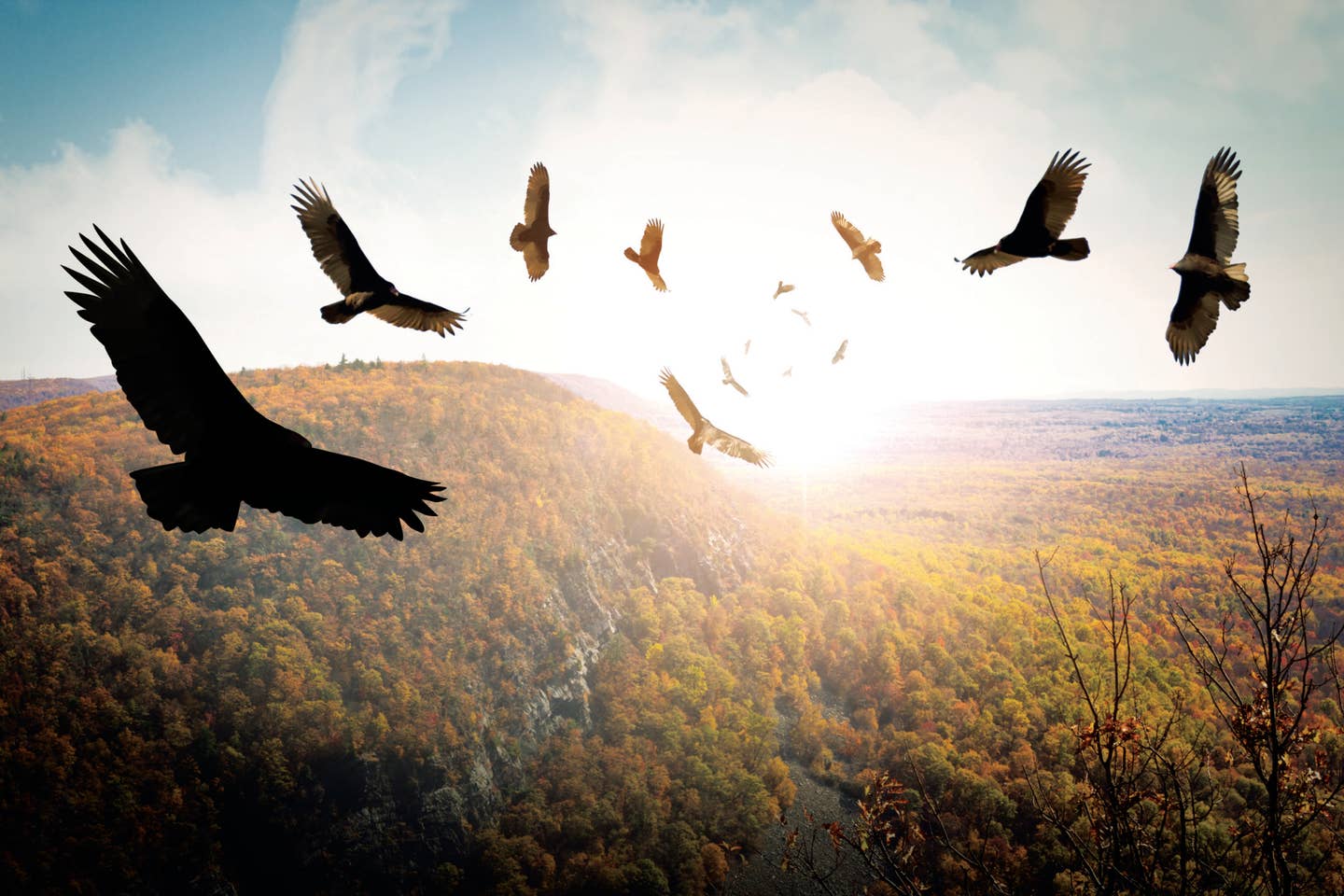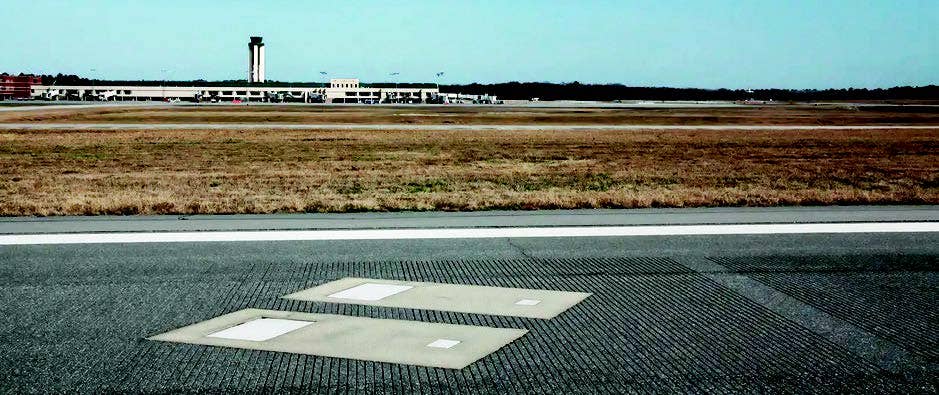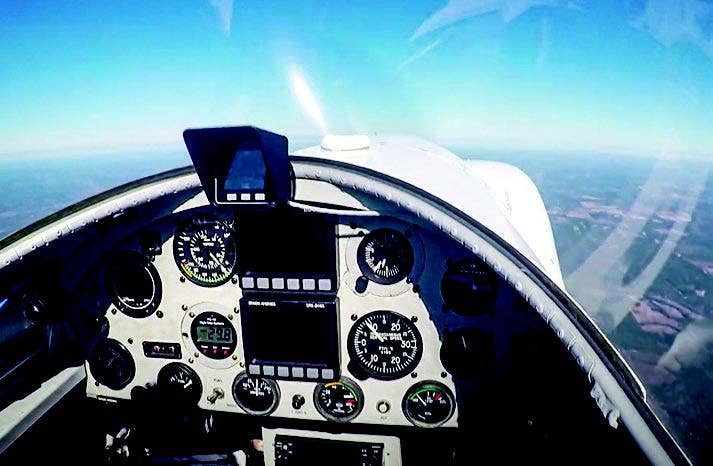Gliders Are Form of Flight That Resonates Above Others
For this pilot, the glide of the vulture radiates the truth that makes all flight possible.

Turkey vultures may be ugly,
roadkill-gobbling, baldhead, wryneck creatures, but
they are calm, silent and steady in their flight like no other birds. [iStock]
Our son and his family have a house on a ridge. On both sides, oak-forested slopes sink steeply into shaded canyons. Surrounded, even below, by open space, the place is congenial to birds. Particularly conspicuous are the frantically active red-capped acorn woodpeckers that dash around, noisily testing the trees and utility poles, and the little stiff-tailed industrious wrens that work the ground. One big, many-trunked oak, right next to the house, scintillates in the early morning with a polyglot crowd of unseen songbirds. Afternoon brings the shrill complaints of red-tailed hawks, night the velvet interrogatives of owls.
Most sublime, however, are the turkey vultures—ugly, roadkill-gobbling, baldhead, wryneck creatures, but calm and silent and steady in their flight like no others. When they are airborne, their repulsive heads are small and inconspicuous; you see mainly the broad black wings skating with effortless grace, tip feathers spread like a musician’s fingers strumming an inaudible air.
If you're not already a subscriber, what are you waiting for? Subscribe today to get the issue as soon as it is released in either Print or Digital formats.
Subscribe NowHow many times, as I sat or worked on the deck behind the house, has one of these birds materialized and swept past me at eye level, skimming over the ridge between one canyon and the other. Stillness in motion, it would fly perfectly level, now and then minutely adjusting a feather or two in concession to the restless air. It seemed to be propelled by nothing at all; nothing, at least, other than its own inscrutable will. As it crossed the western edge, an upwelling breeze from the distant Pacific would buoy it gently upward, a favor it took as its due. The bird seemed to occupy a universe in which motion could occur without friction.
I suppose each pilot must find in some single manifestation of flight a quintessence that resonates more than any other. For some it may be speed, or wild aerobatics, or the sound of a Merlin or formation of radials, or the sweet glint of sunlight on a liner inaudibly high in a sky of pure blue. For me it is, and always has been, the act of gliding. The glide of the vulture radiates the truth that makes all flight possible. That truth spoke, over millennia, to every human who imagined being able to fly and most intelligibly to the few who set about to do it and actually succeeded.
- READ MORE: Flying Along on a Cushion of Grease
I was not alone in being thrilled by the mere sight of something gliding. The collective “Ooh!” evoked by the long flight and smooth landing of a sheet of paper hastily folded while the teacher was out of the room revealed a general susceptibility to its charm. Ten-cent balsa airplanes—the kind whose flat wings and tail slid into slots in a two-dimensional fuselage imprinted in red with insignia and a pilot—would loop if flung with sufficient force and then settle into a series of scallops, but their achievement was not crowned until they had settled, straight and flat, to the ground, slid, and then spun half-round as a blade of grass caught a settling wingtip.
Decades ago, I bought a glider kit from a hobby shop. A product of Easy Built Models of Lockport, New York, it was called “Super Soarer.” It had a 6-foot gull wing and a cruciform tail, and its tall fin had an elegant semielliptical shape. I built it, but then put off weighting its nose and flying it. It was such a handsome thing that I feared what a bad landing or encounter with a tree might do to it. After a long delay, I hung it from the ceiling of my office, where it slowly oscillated until its translucent tissue became brittle, and dust darkened the fuselage’s doped balsa skin.
I was not always so fastidious. When our son was in second grade, his class took a camping trip to a desert park called Anza-Borrego, east of San Diego. Parents went along, and I took with me a new, smaller glider kit, mainly to keep myself occupied but also in the hope that I might interest one or two of the kids in the ancient art of building balsa-and-tissue flying models. I doubt I succeeded in that, and, even if I had, any curiosity I might have aroused would soon have been extinguished by the banning, in the subsequent years, of clear dope, the replacement of silkspan by mylar, and the general erosion of human patience.
Kids would drift by the picnic table on which I had set up my little airplane factory and then drift away when they realized how long glue took to dry. Only after a couple of days did the assembled parts even begin to look like an airplane. On the last day, however, the glider was finished. Moving to a remote place free of both cactus and children, I test flew it, adjusting the nose weight, rudder trim, and energy of the launch until it achieved just the long, flat descent that delighted me.
There was a steep, rocky hillside beside the campsite. In the early evening, I let it be known that I was going to fly the glider, and I climbed the hill, zigzagging among the boulders and bushes while holding the delicate airplane up as if I were in chest-deep water. The children milled around below. The air was still and dusk was gathering. Fifty or 60 feet above them, I turned, paused long and significantly, and then sent the glider forth into the twilit air.
It went out straight at first, then slowly turned to the left and flew parallel to the foot of the hill. The throng of children chased it, their mingled voices rising up to me. It led them along, sometimes dipping toward their outstretched arms and then bobbing upward again on vague bubbles of rising air—a tiny, bright, tantalizing dancer. It seemed to foresee its fate, as I did, and held it at bay as long as it could. But then straining fingers touched it, and it vanished into the little crowd.
By the time I had picked my way back down the hillside in the failing light, the throng of children had partly dispersed. A little group came to me with what was left of the glider. One wing was broken but still retained much of its shape. The tissue cover was punctured in several places. Half-apologetic, half-hopeful, they handed it to me. “Will you fly it again?” one boy asked. “No,” I said. “You only fly once.”
A few days later, one of the parents gave me some snapshots. Two were of me high on the hillside, the third of the glider in flight. With open sky all around and the gibbous moon above, the little airplane sailed happily in its element. Invisibly sustained, remote, ethereal, it seemed to be savoring the few seconds that remained before the end of its final and fatal glide.
This column first appeared in the December 2023/Issue 944 of FLYING’s print edition.

Subscribe to Our Newsletter
Get the latest FLYING stories delivered directly to your inbox







